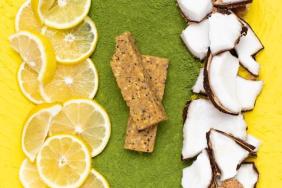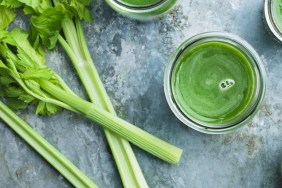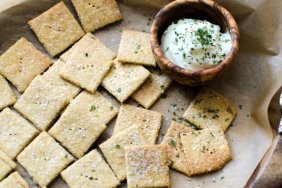We already know that a diet high in sugar is a problem. According to the World Health Organization, excess sugar is anything over 25 grams (6 teaspoons) per day, yet most people have consumed this amount by breakfast (there’s a reason Dr. Frank Lipman insists there’s no difference between having cookies for breakfast and most boxed cereals). Excess sugar consumption causes insulin and cortisol production to spike, which can lead to fat storage, obesity, diabetes and tooth decay. It has also been associated with an increased risk for developing dementia and depression. Sugar is also a major reason so many of us feel low energy.
[ Surprise! There’s More Sugar in Your Diet Than You Realized ]
If sugar is so bad for us, why do we have so much trouble limiting consumption? We consulted the experts to find out the most healthy sugar alternatives — if there really is such a thing.
Brown Sugar
Brown sugar is essentially the same as white sugar, which is the classic sweetener. “White sugar is the byproduct of refining either cane or beet sugar into pure sucrose,” says Maria Emmerich, author of Quick & Easy Ketogenic Cooking and the forthcoming The 30 Day Ketogenic Cleanse. “Because of the way it’s refined, most of the nutrients are stripped out and the only thing that remains is a mixture of 50 percent glucose and 50 percent fructose.” The high fructose content is at the root of the aforementioned health risks. The only difference with brown sugar is that it’s made with up to 10 percent by weight of molasses in addition to the sucrose.
According to Emmerich, this molasses can be added in either directly from the refinement process itself or post-processing. “The molasses can add some vitamins and minerals into the mixture (specifically iron) as well as making it a potential source of live yeast. This makes it useful for bakers wanting to add lift to their baked goods, but still pretty useless for adding into a healthy diet.”
Honey
“While it may contain some trace amounts of antioxidants and possess antimicrobial properties, the body still treats honey like table sugar,” says Dr. Neal Malik, MPH, RDN, CHES, EP-C and core faculty member at the School of Natural Health Arts & Sciences at Bastyr University. Also note that honey contains more calories than sugar; one teaspoon of sugar contains 16 calories versus honey, which has 22.
“Despite the fact that several websites claim honey to be some kind of miracle food, most of these statements are mythical and unproven. If you still think honey is worth using in your baked goods because of the vitamins, let me put it another way: Only 2 percent of honey contains vitamins! And in most cases, store-bought honey doesn’t even contain the pollen that is claimed to have health benefits,” cautions Emmerich.
Turbinado Sugar/Raw Cane Sugar
“This sugar undergoes less processing than white sugar or brown sugar,” testify Lyssie Lakatos, RDN, CDN, CFT and Tammy Lakatos Shames, RDN, CDN, CFT, known as The Nutrition Twins. “It’s made by crushing sugar and squeezing out the juice. The juice is then evaporated and spun in a centrifuge to produce large crystals. It has a slight molasses flavor as the raw sugar crystals contain molasses, which gets further processed out with white and brown sugar.”
According to The Nutrition Twins, the molasses adds a few extra nutrients when compared to white sugar, which while appealing to many people, is not enough to make a difference. “Even though it’s less processed than white sugar, it’s still sugar and can lead to weight gain, diabetes and sugar highs and crashes.”
Agave
Contrary to what many think, agave is actually highly processed. “It does taste sweeter than table sugar, which may make some use less of it, but the body will still treat it like fructose, which means it will get processed by the liver and potentially get converted to fat,” says Malik. “Often touted as a healthy sugar alternative because of its low glycemic index, studies on how the human body responds to agave are still needed. At this time, the American Diabetes Association recommends that we limit our intake.” Also note that it has 27 calories per teaspoon (more than both honey and white sugar) and no nutritional benefits. “It’s a huge amount of empty calories for the trade-off of a little bit of sweet flavor,” says Emmerich.
Coconut Sugar
“Coconut palm sugar is low glycemic and higher in nutrients compared to regular sugar, which can make it a better alternative to sugar when baking,” says Caroll Lee, AADP board certified health coach and founder/CEO of Provenance Meals. That said, while it does maintain some of the nutrients found in the coconut palm, the amounts you’d have to ingest to get real benefits make it a negligible source for any kind of nutrients. Consider the calories from coconut sugar empty like all of the ones you’d get from the aforementioned options.
Splenda
Splenda is 600 times sweeter than table sugar and is made by reacting sucrose with chlorine. Yes, it’s as nauseating as it sounds (not to mention that chlorine has been shown to increase the risk of cancer). Moreover, unlike what ads claim, Splenda is not actually calorie-free. “Sucralose does have calories, but because it’s 600 times sweeter than sugar, very small amounts are needed to achieve the desired sweetness,” says Emmerich, who cautions, however, that this is only when you use the true form (liquid sucralose).
“Splenda is bulked up, so it can be used in place of sugar. The first two ingredients in Splenda are dextrose and maltodextrin, which are carbohydrates that are not free of calories. One cup of Splenda contains 96 calories and 32 grams of carbohydrates, which is substantial, especially for those with diabetes, but overlooked due to the label claiming that it’s a no-calorie sweetener.” She adds that sucralose has also been found to inhibit zinc and iodine from being absorbed, which are essential for proper thyroid function. It’s also linked to decreasing good gut bacteria, which will increase irritable bowel syndrome.
Maple Syrup
“Pure maple syrup, which has 14 calories per teaspoon, is simply boiled sap from maple trees — make sure yours is the real stuff to reap the benefits,” explain The Nutrition Twins. “It’s rich in potent antioxidants and studies have shown it may even help to fight cancer. Maple syrup has a lower glycemic index (54) than table sugar (65), so it may keep your blood sugar more on an even keel and cause fewer blood sugar highs and lows than table sugar.” The twins issue a note of caution, however — portion control is key. “Most people don’t just drizzle it on their pancakes, they pour it on, so calories can really add up.”
Monk Fruit Sugar
“The research on monk fruit sugar appears promising,” according to Malik. “Virtually calorie-free and quite sweet, monk fruit sugar may possess some antioxidant qualities.” The Nutrition Twins add that it may be helpful for diabetics since it doesn’t impact blood sugar, doesn’t lead to tooth decay and it’s an easy way to add sweetness without calories. Note that with monk fruit it’s very common to find manufacturers adding in fillers, so read labels carefully.
Stevia
Stevia is the sweetener of choice if you ask most health experts. It’s made from the stevia rebaudiana plant and it’s up to 150 times sweeter than table sugar, meaning you need a lot less. Because it’s non-glycemic and non-caloric, it can be a great sugar substitute. Many companies, however, add bulking agents, like maltodextrin, to make it useful for baking. “Stay away from these products! Sugar has a glycemic index of 52, whereas maltodextrin has a glycemic index of 110!” exclaims Emmerich, who suggests looking for products with just stevia as the ingredient or with stevia combined with another natural sweetener, like erythritol.








